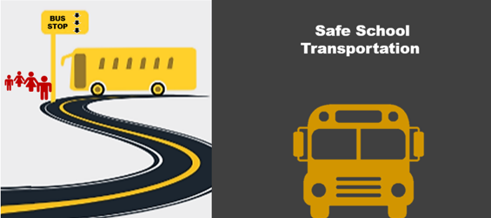
In continuation to our blog on safe school transport last week, we would like to address another critical aspect of safety involving private school transport. This blog aims to shed light on the unique challenges and risks involved in private school transportation and emphasize the importance of prioritizing safety measures for the well-being of children.
Private school transportation plays a crucial role in providing convenient travel options for children attending private schools. While most schools offer transportation services through their own vehicles or outsourced transport vendors, a significant number of parents opt for private transport for various reasons. However, it is important to address the potential dangers and safety concerns associated with private transportation services.
Accurate statistics specifically related to accidents and incidents in private school transportation are not readily available. However, incidents reported in news articles and media outlets highlight the risks and challenges faced in this mode of transportation.
Challenges of Private School Transportation:
- Non-compliance with safety standards: While most schools provide transportation services through their own vehicles or outsourced vendors, a significant number of parents opt for private transport. These vehicles, however, may not adhere to safety standards or regulations, putting children at risk.
- LPG kit explosions: In some instances, children have been injured due to explosions of LPG kits installed in vans used for private transportation. These incidents highlight the potential hazards associated with improper installation and maintenance of such kits.
- Inadequate driver vetting: Private transportation services may not conduct thorough background checks or driver screenings, leading to risks of unqualified or unsafe drivers operating the vehicles.
- Overcrowding: Private transportation vehicles are often operated beyond their designated capacity, leading to overcrowding and compromising safety in case of accidents or emergencies.
- Lack of safety equipment: Some private transportation providers may neglect essential safety equipment such as seat belts, first aid kits, or emergency exits, further jeopardizing the well-being of children.
- Uncontrolled driver behavior: Since private transportation drivers are not under the direct control of the school, there have been incidents of drivers using foul language in front of children, setting a negative example and influencing their behavior.
Importance of Safety Measures:
- Compliance with safety standards: Private transportation providers must ensure that their vehicles meet safety standards and adhere to regulations, regardless of whether they are provided by the school or privately arranged by parents.
- Proper installation and maintenance: LPG kits in transportation vehicles should be installed and maintained by certified professionals to minimize the risk of accidents.
- Thorough driver vetting: Implementing stringent driver screening processes, including background checks, driving record verification, and adherence to traffic regulations, is vital to ensure qualified and responsible drivers.
- Safe vehicle capacity: Private transportation vehicles must operate within their designated capacity limits to avoid overcrowding and maintain the safety and comfort of the children.
- Safety equipment provision: Seat belts, first aid kits, fire extinguishers, and emergency exits should be present and functional in all private transportation vehicles to ensure the safety and well-being of children.
- Communication and feedback mechanisms: Establishing effective communication channels between parents, schools, and transportation providers can facilitate timely feedback, address concerns, and maintain accountability for safety standards.
The safety of children in private school transportation requires collective efforts from parents, schools, and transportation providers. Conducting regular safety audits of private transport vehicles and their operations can help identify areas of improvement and ensure compliance with safety standards. By prioritizing safety measures such as compliance with safety standards, proper installation and maintenance of equipment, thorough driver vetting, safe vehicle capacity, and provision of necessary safety equipment, we can minimize the risks and create a secure environment for children during their travel to and from private schools.
Let us work together to raise awareness, promote responsible practices, and ensure the well-being of our children in private school transportation.
JUN
2023
